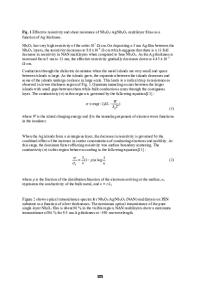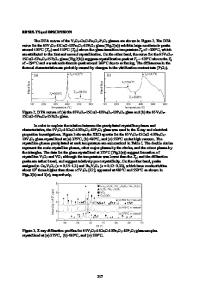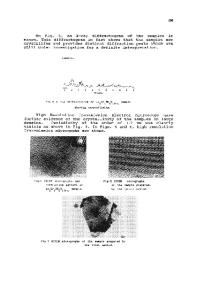Nb 2 O 5 -based solar fabrics
- PDF / 653,673 Bytes
- 6 Pages / 612 x 792 pts (letter) Page_size
- 92 Downloads / 395 Views
1240-WW10-09
Nb2O5-based solar fabrics A. Le Viet, R. Jose, and S. Ramakrishna* Nanoscience and Nanotechnology Initiative, National University of Singapore, Singapore 117542.
ABSTRACT
Photo active fibers containing dye anchored Nb2O5 nanorods, hole conduction and electron conduction materials were synthesized by the electrospinning technique. A 1.92 cm² piece of fabric, composed of randomly aligned nanorods, was tested as a photovoltaic device under standard illumination conditions. The solar fabric exhibited an open circuit voltage (Voc) of ~0.67 V, a short current density (JSC) of 4.77×10-4 mA/cm², a fill factor (FF) of ~15%, and an overall photovoltaic conversion efficiency (η) of 4.5×10-7%. This article presents for the first time the application of Nb2O5 in solar fabric.
INTRODUCTION
Photovoltaic raises interest for it can potentially provide an endless supply of energy. Currently there are many technologies available to harness the sun power to produce electricity. In 1991 Grätzel used mesoporous TiO2 to design a new generation of photovoltaic device, the Dye Sensitized Solar Cell (DSSC) [1]. The system differs completely from the conventional photovoltaic technologies, based on a silicon P-N junction. The DSSC consists of photoactive dye anchored on semiconducting metal oxide, which itself is deposited on a conducting glass to form the photoanode in the presence of an electrolyte. Efficiency as high as 11.2% was reported using TiO2 nanoparticles, therefore DSSC offers promise of decent efficiency with low cost and preparation complexity [2]. Variations of DSSC have already been investigated, such as the photoactive fiber [3-6]. In this system each fiber includes all the components of a DSSC; and therefore, acts as a standalone solar cell. Such photoactive fiber could serve as electricity
generating fabric. The fiber morphology allows flexibility, a feature that doesn’t exist in other solar cell technologies. Different strategies exist to produce solar active fibers [3-6]. The classical DSSC structure can be transformed a double transmission line. Senecal et al fabricated a fiber cloth by electrospinning a solution containing dye-anchored TiO2 nanoparticles and LiI/I2). Very recently, Nair et al [7] replaced the TiO2 nanoparticles using nanowires and reported efficiency up to ~10-3 % with a VOC ~0.320 V, JSC ~ 18 µA/cm2 and FF ~ 0.18% . So far, the oxide material under consideration for such studies was confined to nanocrystalline TiO2. This article presents the synthesis of Nb2O5 based solar fabrics, prepared by electrospinning. To the best of the author’s knowledge, no attempt has been made to apply Nb2O5 in solar fabrics. Nb2O5 is already used in regular DSSC system [8, 9]. Among all metal oxides, it offers the highest IPCE after TiO2 as well as good electron injection from the dye to the metal oxide [10]. Beside it possesses a larger band gap than TiO2, which can result in a higher open circuit voltage.
EXPERIMENTAL DETAILS
The synthesis of the solar fabric includes two electrospinning steps. Firs
Data Loading...











